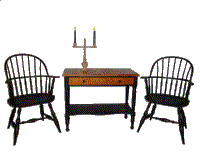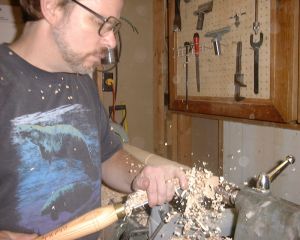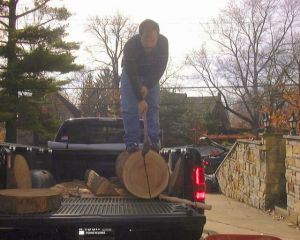 |
One of the processes that separates traditional chairmaking from
factory chairmaking is depicted here. The material for the spindles, bent arms,
bows, and crests is prepared differently that you might think. All of the material
for making spindles and for the steam-bent parts is split from green logs...
in this case a red oak log. The log is split (or rived) further and further
until it eventually ends up the size of a blank for whatever
part that is being made. The reason for taking this trouble is that the part will
have straight grain running all the way through the part and will ultimately be
much stronger than an equivalent sized part that is sawn. Also, parts which
will be bent have much less chance of splitting when they are created in this way. |
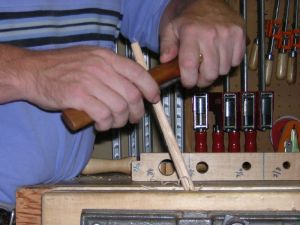 |
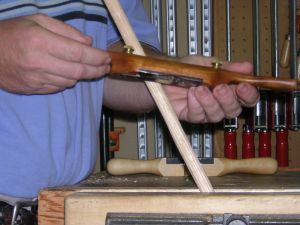 |
After rough shaping of the spindle blank with a drawkinfe, the final
shaping is completed with a spokeshave. In the picture on the far left,
the end of the spindle is being tapered to fit into a bow. The righthand
photo shows my homemade spokeshave. The shave was made based on the information
found here. |
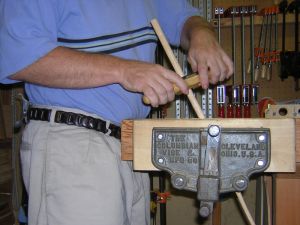 |
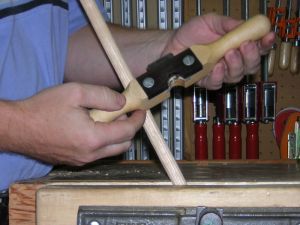 |
For the final shaping of the spindles, I use a homemade chairdevil. It is
very similar to the chairdevil shown in Drew Langsner's book on chairmaking.
Prior to assembly, a faceted tenon is cut on the bottom of the spindle - see assembly
for details. |
